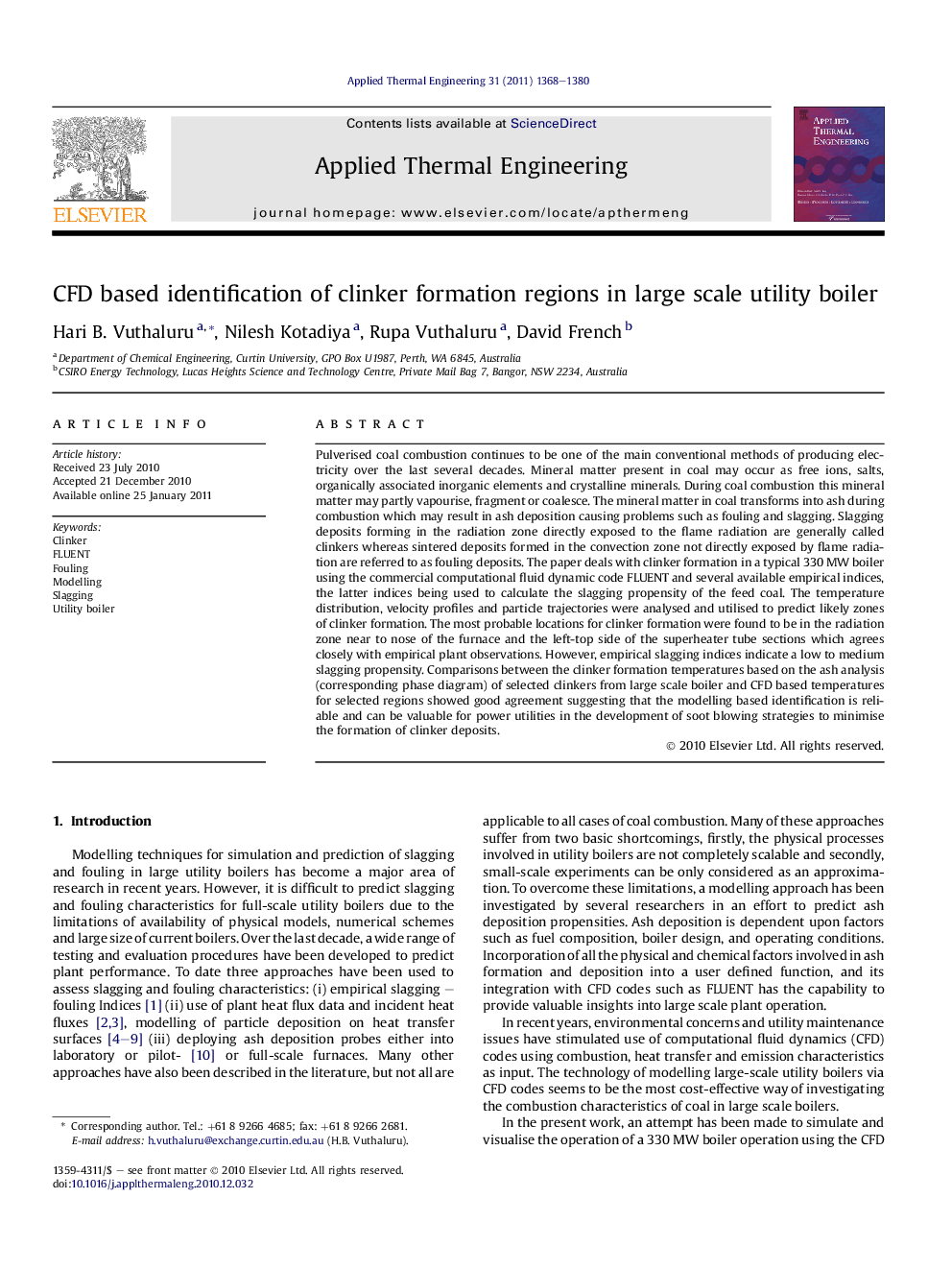| کد مقاله | کد نشریه | سال انتشار | مقاله انگلیسی | نسخه تمام متن |
|---|---|---|---|---|
| 647898 | 1457189 | 2011 | 13 صفحه PDF | دانلود رایگان |

Pulverised coal combustion continues to be one of the main conventional methods of producing electricity over the last several decades. Mineral matter present in coal may occur as free ions, salts, organically associated inorganic elements and crystalline minerals. During coal combustion this mineral matter may partly vapourise, fragment or coalesce. The mineral matter in coal transforms into ash during combustion which may result in ash deposition causing problems such as fouling and slagging. Slagging deposits forming in the radiation zone directly exposed to the flame radiation are generally called clinkers whereas sintered deposits formed in the convection zone not directly exposed by flame radiation are referred to as fouling deposits. The paper deals with clinker formation in a typical 330 MW boiler using the commercial computational fluid dynamic code FLUENT and several available empirical indices, the latter indices being used to calculate the slagging propensity of the feed coal. The temperature distribution, velocity profiles and particle trajectories were analysed and utilised to predict likely zones of clinker formation. The most probable locations for clinker formation were found to be in the radiation zone near to nose of the furnace and the left-top side of the superheater tube sections which agrees closely with empirical plant observations. However, empirical slagging indices indicate a low to medium slagging propensity. Comparisons between the clinker formation temperatures based on the ash analysis (corresponding phase diagram) of selected clinkers from large scale boiler and CFD based temperatures for selected regions showed good agreement suggesting that the modelling based identification is reliable and can be valuable for power utilities in the development of soot blowing strategies to minimise the formation of clinker deposits.
Research highlights
► Clinkering phenomena is of paramount importance to utilities.
► No method exists in the literature to relate clinker phenomena.
► CFD based approach ties up excellently with operating conditions to predict clinker zones.
► Identified clinker zones matches with analytical observations in large scale utility.
Journal: Applied Thermal Engineering - Volume 31, Issues 8–9, June 2011, Pages 1368–1380